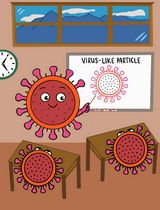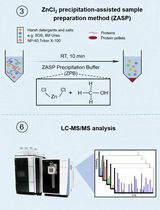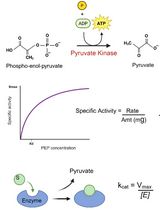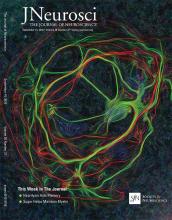- Submit a Protocol
- Receive Our Alerts
- Log in
- /
- Sign up
- My Bio Page
- Edit My Profile
- Change Password
- Log Out
- EN
- EN - English
- CN - 中文
- Protocols
- Articles and Issues
- For Authors
- About
- Become a Reviewer
- EN - English
- CN - 中文
- Home
- Protocols
- Articles and Issues
- For Authors
- About
- Become a Reviewer
Heavy Metal Stress Assay of Caenorhabditis elegans
Published: Vol 7, Iss 11, Jun 5, 2017 DOI: 10.21769/BioProtoc.2312 Views: 11541
Reviewed by: Oneil G. BhalalaTugsan TezilJian Chen

Protocol Collections
Comprehensive collections of detailed, peer-reviewed protocols focusing on specific topics
Related protocols

Multi-phase Training in Virus-Like Particle Synthesis to Foster Science Self-efficacy in Students With Minimal Laboratory Experience
Macie A. Proctor-Roser [...] Naomi R. Lee
Jul 20, 2025 1707 Views

ZnCl2 Precipitation-Assisted Sample Preparation for Proteomic Analysis
Qiqing He [...] Fuchu He
Jul 20, 2025 2625 Views

An Optimized Enzyme-Coupled Spectrophotometric Method for Measuring Pyruvate Kinase Kinetics
Saurabh Upadhyay
Aug 20, 2025 2283 Views
Abstract
Organisms have developed many protective systems to reduce the toxicity from heavy metals. The nematode Caenorhabditis elegans has been widely used to determine the protective mechanisms against heavy metals. Responses against heavy metals can be monitored by expression of reporter genes, while sensitivity can be determined by quantifying growth or survival rate following exposure to heavy metals.
Keywords: Caenorhabditis elegansBackground
Some heavy metals, such as arsenic, cadmium and mercury, are known to be harmful to the majority of organisms including humans (Valko et al., 2005). To reduce the toxicity by these metals, the organisms have developed various protective systems. The nematode Caenorhabditis elegans has been used to understand the mechanisms of protection against heavy metals. Previous studies have revealed that many genes, such as detoxification enzymes, transcription factors and signaling factors, are involved in the protection from heavy metals in this organism (Broeks et al., 1996; Mizuno et al., 2004; Inoue et al., 2005; Schwartz et al., 2010). Determinations of viability and growth, in addition to measurements of reporter gene expression, are usually used to monitor the effects of heavy metals in C. elegans. In this protocol, we describe the methods for assays for arsenic, copper and cadmium using C. elegans.
Materials and Reagents
- Latex glove (KCWW, Kimberly-Clark, catalog number: 57330 )
- Petri dishes 60 x 15 mm (Iwaki, catalog number: 1010-060 )
- 1.5 ml plastic tubes (Eppendorf, catalog number: 3810X )
- 1 ml pipetman tips (Thermo Fisher Scientific, Thermo Scientific, catalog number: 111-N-Q )
- 0.2 ml pipetman tips (Thermo Fisher Scientific, Thermo Scientific, catalog number: 110-N-Q )
- Slide glass (Matsunami Glass, catalog number: S2227 )
- Paper tape
- Cover glass (Matsunami Glass, 18 x 18, Thickness No.1)
- Corning 50 ml centrifuge tubes (Corning, catalog number: 4558 )
- Petri dishes 35 x 15 mm (Iwaki, catalog number: 1000-035 )
- Pasteur pipet, 5 inch (Iwaki, catalog number: IK-PAS-5P )
- Parafilm (Wako Pure Chemical Industries, catalog number: 535-02443 )
- Autoclave tape
- pH probe (As One, catalog number: 2-347-05 )
- 10 ml glass tubes (Iwaki, catalog number: 09183982 )
- 99.98% Platinum Wire, ø0.2 mm (Nilaco, catalog number: 351325 )
- OP50 E. coli bacteria (University of Minnesota, C. elegans Genetics Center, N/A)
- Worm strains (can be obtained from CGC: see Table 1 for example)
- Calcium chloride dihydrate (CaCl2·2H2O) (Wako Pure Chemical Industries, catalog number: 031-00435 )
- Potassium phosphate dibasic (K2HPO4) (Wako Pure Chemical Industries, catalog number: 164-04295 )
- Potassium phosphate monobasic (KH2PO4) (Wako Pure Chemical Industries, catalog number: 169-04245 )
- Magnesium sulfate heptahydrate (MgSO4·7H2O) (Wako Pure Chemical Industries, catalog number: 138-00415 )
- Bacto peptone (BD, BactoTM, catalog number: 211677 )
- Sodium chloride (NaCl) (Wako Pure Chemical Industries, catalog number: 191-01665 )
- Bacto agar (BD, BactoTM, catalog number: 214010 )
- Distilled water
- Cholesterol (Wako Pure Chemical Industries, catalog number: 034-03002 )
- 99.5% ethanol (Wako Pure Chemical Industries, catalog number: 057-00456 )
- LB broth (BD, Difco, catalog number: 244620 )
- Sodium phosphate dibasic (Na2HPO4) (Wako Pure Chemical Industries, catalog number: 194-02875 )
- Pentahydrate copper sulphate (CuSO4·5H2O) (Wako Pure Chemical Industries, catalog number: 034-20065 )
- Cadmium chloride, anhydrous (CdCl2) (Wako Pure Chemical Industries, catalog number: 036-00125 )
- Sodium (mate)arsenite (NaAsO2) (Sigma-Aldrich, catalog number: S7400 )
- Gelatin (Sigma-Aldrich, catalog number: G7765 )
- Agarose (Thermo Fisher Scientific, InvitrogenTM, catalog number: 16500500 )
- Tris base (Nacalai Tesque, catalog number: 35434-05 )
- Hydrochloric acid (HCl; 35-37%) (Wako Pure Chemical Industries, catalog number: 080-01066 )
- SDS (Wako Pure Chemical Industries, catalog number: 191-07145 )
- Glycerol (Wako Pure Chemical Industries, catalog number: 075-00616 )
- Bromophenol blue (Wako Pure Chemical Industries, catalog number: 021-02911 )
- 2-mercaptoethanol (Wako Pure Chemical Industries, catalog number: 135-07522 )
- Sodium azide (Wako Pure Chemical Industries, catalog number: 195-11092 )
- 1 M CaCl2 (see Recipes)
- 1 M K-phosphate buffer (pH 6) (see Recipes)
- 1 M MgSO4 (see Recipes)
- NGM solution (see Recipes)
- 6 cm NGM dish with OP50 (see Recipes)
- 0.5% cholesterol (see Recipes)
- LB broth (see Recipes)
- M9 buffer (see Recipes)
- 1 M sodium azide (see Recipes)
- 1 M CuSO4 (see Recipes)
- 1 M CdCl2 (see Recipes)
- 0.5 M sodium arsenite (see Recipes)
- 2% gelatin (see Recipes)
- 2% agarose (see Recipes)
- 2% agarose with 10 mM sodium azide (see Recipes)
- Tris-HCl (pH 6.8) (see Recipes)
- 1 M 3x SDS sample buffer (see Recipes)
Equipment
- Stereomicroscope (Olympus, model: SZ60 )
- Centrifuge (TOMY, model: MX-100 )
- Rotator (TAITEC, model: RT-50 , catalog number: 0000165-000)
- Fluorescent microscope (Nikon Instruments, model: Eclipse E800 ) with highly sensitive camera (ANDOR, model: Zyla 5.5 ) controlled by Nikon NIS-Elements software
- Pipetman (P-20, P-200, P-1000; Gilson)
- Heat block (TAITEC, model: DTU-Mini , catalog number: 0063287-000)
- Autoclave (TOMY DIGITAL BIOLOGY, model: SX-500 )
- Microwave oven (Sharp)
- Pipettor (Drummond Scientific, model: Pipet-Aid® XP , catalog number: 4-000-101)
- Shaker (TAITEC, model: Personal-11 , catalog number: 0000145-000)
- Refrigerated incubator (Panasonic Healthcare, model: MIR-154-PJ )
- Bunsen burner (Warzef)
- Dental burner (Phoenix-Dent, model: APT-3 )
Software
- ImageJ software (https://imagej.nih.gov/ij/download.html)
- GraphPad Prism QuickCalcs (https://www.graphpad.com/quickcalcs/)
Procedure
- Acute reporter assay in liquid
The acute assay in liquid is used for the determination of the expression of reporter genes induced by short exposure to heavy metals. It can also be used for the preparation of protein extracts of treated worms. For the determination of reporter expression, we recommend using worm strains carrying an appropriate GFP reporter, such as gcs-1p::gfp. Some worm strains carrying a GFP reporter are available from Caenorhabditis Genetics Center (CGC) (Table 1).
Table 1. CGC strains available for the GFP reporter assayStrain in CGC Genotype Organ to determine For assay LD1171 ldIs3 [gcs-1p::gfp + rol-6(su1006)] Intestine As(III) etc. (Wang et al., 2010) JF85 mtEx60 [numr-1p::gfp + rol-6(su1006)] Intestine Cd(II) (Tvermoes et al., 2010) JF85 mtEx60 [numr-1p::gfp + rol-6(su1006)] Pharynx Cu(II) (Tvermoes et al., 2010) - Prepare worms grown on 6 cm NGM dishes with OP50. Although the mixed stage of worms is acceptable, a specific stage of worms (except embryos) can be used if you desire. Avoid starving the worms.
- Adding the proper amount of heavy metal solution to M9 buffer (Notes 1 and 2). Dispense 0.5 ml of the solution to 1.5 ml tubes.
- Add 1 ml of M9 buffer (without heavy metals) to the NGM dishes, in which worms are grown, and gently shake it.
- Transfer the M9 buffer containing worms from NGM dishes to 1.5 ml plastic tubes, using gelatin-coated 1 ml pipetman tips (Note 3). Although the concentration of worms depends on the culture conditions, we usually use approximately 1,000 worms per ml. The worm numbers can be estimated by transferring 10 μl of the solutions to a slide glass just after vortexing and counting the number of worms under a stereomicroscope.
- Centrifuge at 700 x g, 2 min, 20 °C. Discard the supernatant.
- Add 1 ml M9 buffer to the tube and centrifuge at 700 x g, 2 min. Discard all but a small aliquot (< 0.05 ml) of the supernatant.
- Transfer the appropriate amount of worms to 1.5 ml plastic tubes filled with 500 μl of heavy metal-containing M9 buffer. Do not exceed 20 μl of worm volume in each tube.
- Rotate (2 sec/rotation to keep an aerobic condition) at 20 °C (or room temperature) by rotator, from 30 min to a few hours.
- While waiting, make an agar pad for the end of incubation with heavy metals (Video 1). First, add a double-layered paper tape on the surface of two slide glasses. Place a clean slide glass side by side between the two taped slide glasses (Figure 1A). Put 100 μl of 2% agarose solution with 10 mM sodium azide in the middle of the clean glass (Figure 1B), then immediately put another clean slide glass on the agarose perpendicular to the bottom slide glass (Figure 1C). After 1 min, carefully remove the two taped slide glasses (Figure 1D), and then remove the top slide glass (Figure 1E). Avoid drying until ready to use.Video 1. Making an agar pad

Figure 1. Preparation of agar pad - Centrifuge at 700 x g, 2 min. Discard the supernatant and retain the remaining ~50 μl of M9 with worms.
- Transfer the worms from the 1.5 ml tube to an NGM agar dish (without heavy metals) by using a gelatin-coated pipetman tip.
- Put 2 μl of M9 on the agarose pad. Pick the worms from the NGM dish, transfer them to the agarose pad, and seal with a cover glass. Immediately use a fluorescent microscope to determine the fluorescence intensity of the reporter gene.
- Prepare worms grown on 6 cm NGM dishes with OP50. Although the mixed stage of worms is acceptable, a specific stage of worms (except embryos) can be used if you desire. Avoid starving the worms.
- Acute reporter assay on dish
This assay is suitable for a small number of worms (20-100 worms) in a desired developmental stage, except embryo.- Prepare NGM solution (see Recipes) for dishes.
- Add the appropriate amount of heavy metal stock solutions into 50 ml Corning tubes (see Note 2). Add 50 ml of NGM solution at 60 °C into each tube and shake them to mix. Incubate at 60 °C until bubbles disappear.
- Pour into 3.5 cm dishes. Pour also the remaining NGM solution into 3.5 cm dishes (use as a control). Leave overnight at room temperature.
- Make an overnight culture of OP50 with LB broth. Add 20 μl of the OP50 solution to the 3.5 cm dishes. Leave overnight at room temperature.
- Transfer the plates into closed boxes or wrap them with polystyrene bags and store at 4 °C until use.
- Just before use, incubate the dishes at 20 °C for 1 h (Note 4).
- Put > 20 young adults (grown 1-3 days from late L4 stage) in a 3.5 cm NGM dish containing heavy metal by using a worm pick made from a platinum wire attached to the tip of a Pasteur pipet (Note 5). As a control, use NGM dishes without heavy metals. Incubate for 30 min to several hours at 20 °C.
- While waiting, make agarose pads (see Procedure A: Acute reporter assay in liquid). Transfer the worms onto an agarose pad and determine the fluorescence intensity of the reporter gene using a fluorescent microscope.
- Prepare NGM solution (see Recipes) for dishes.
- Acute assay for immunoblotting
When you want to prepare protein extracts for Immunoblotting, perform the following procedure (Note 6).
Note: Steps C1 to C8 is the same as A1 to A8 in ‘Acute reporter assay in liquid’.- Centrifuge tubes at 700 x g, 2 min. If the amount of worm pellet seems to exceed 25 μl at this step, divide the samples to additional empty tubes and re-centrifuge them.
- Add 1 ml M9 buffer and centrifuge at 700 x g, 2 min. Discard the supernatant and retain the remaining approximately 50 μl of M9 with worms. We estimate the approximate volume of the worm solution by comparing with a sample tube that contains 50 μl of water, and then confirm by sucking the solution with a pipetman adjusted to 50 μl with a gelatin-coated tip.
- Add 25 μl of 3x SDS sample buffer.
- Boil in water bath (or heat block) for 3 min. Centrifuge the samples at 15,000 x g for 3 min before loading. The samples can be used for immunoblotting of desired proteins, such as PMK-1 and phosphorylated PMK-1 (Inoue et al., 2005).
- Centrifuge tubes at 700 x g, 2 min. If the amount of worm pellet seems to exceed 25 μl at this step, divide the samples to additional empty tubes and re-centrifuge them.
- Growth assay
Growth assay is used for the determination of the sensitivity to heavy metals. This assay can also be used for the survival assay.- Follow the steps B1-B6 of the procedure in ‘Acute reporter assay on dish’.
- Transfer > 20 young adults to a 3.5 cm NGM dish without heavy metals. Incubate for several hours at 20 °C.
- Pick ~50 eggs from the NGM dishes and transfer them to an NGM assay plate containing heavy metal (see Video 2). E. coli grown on the normal NGM dish is used as glue to attach the eggs to the platinum wire (Note 7). As a control, transfer the same number of eggs to an NGM plate without heavy metals. Seal the side of each dish with Parafilm. Incubate at 20 °C.
- The next day, determine the number of hatched eggs by counting the unhatched eggs. Continue to incubate at 20 °C.
- The worms that developed into adulthood are counted 4 days after egg laying (Note 8).Video 2. Transfering eggs from a normal to a heavy metal-containing NGM plate
- Follow the steps B1-B6 of the procedure in ‘Acute reporter assay on dish’.
Data analysis
In Acute assays, take pictures by appropriate camera attached to the fluorescent microscope. Then the pictures can be used to quantify the intensity of GFP fluorescence with the ImageJ program. The frequency of growth into adulthood can be calculated by dividing the number of adult animals 4 days after egg laying by the number of eggs hatched on the day after egg laying. The difference between the heavy metal treatment and control data can be tested for statistical significance by Fisher’s or chi-square test using for example GraphPad QuickCalcs.
Notes
- Some other researchers prefer to use a different medium (Dong et al., 2004). The difference does not seem to essentially affect the experiments.
- The concentrations of heavy metals in the assays vary according to the purpose and the worm strains. The typical concentrations of heavy metals used for the assay are as follows (Table 2):
Table 2. Typical concentrations of heavy metals for the assaysAcute assays Growth assay As(III) 0.5-1 mM (Broeks et al., 1996; Inoue et al., 2005) 0.5-1 mM (Broeks et al., 1996; Inoue et al., 2005) Cd(II) 0.1 mM (Dong et al., 2004) 0.01-0.1 mM (Broeks et al., 1996; Mizuno et al., 2004; Tvermoes et al., 2010) Cu(II) 1 mM (Mizuno et al., 2004) 0.05-0.1 mM (Broeks et al., 1996; Mizuno et al., 2004; Tvermoes et al., 2010)
For the initial start-up experiment, we recommend to determine the highest concentration of the heavy metal. We recommend to freshly prepare the assay solution before the assay. The NGM dishes with heavy metals can be stored for several days at 4 °C, avoid both light and drying. We also recommend wearing latex gloves when handling the heavy metal solutions and dishes. - Prepare a gelatin-coated pipetman tip to avoid the sticking the worms inside the tip. Use a pipetman to briefly fill a 1 ml pipette tip with 2% gelatin solution and then quickly empty it.
- Avoid the use of wet dishes.
- You can change the desired developmental stage of worms for the survival assay to something else than eggs. The viable worms are checked by prodding with a platinum wire.
- The protein extracts are typically used to determine the amount of protein or the phosphorylation level. Usually, at least 100 animals (in the case of the adult stage) are required for immunoblotting.
- E. coli OP50 on a 6 cm NGM dish with OP50, which has stayed for several days at room temperature, is best for glue.
- Some worms will stick the sidewall of the dish. Subtract the number of the stuck worms from the number of eggs placed on the assay dish in data analysis.
Recipes
- 1 M CaCl2
Dissolve 147.01 g CaCl2 in dH2O and adjust the volume to 1 L
Autoclave at 120 °C, 20 min
Store at room temperature - 1 M K-phosphate buffer (pH 6)
Dissolve 35.6 g K2HPO4 and 108.3 g KH2PO4 in dH2O
Adjust pH to 6.0 and the volume to 1 L
Autoclave at 120 °C, 20 min
Store at room temperature - 1 M MgSO4
Dissolve 246.47 g MgSO4·7H2O (or 120.37 g anhydrous MgSO4) in distilled water (dH2O) and adjust the volume to 1 L
Autoclave at 120 °C, 20 min
Store at room temperature - NGM solution
0.75 g Bacto peptone
0.9 g NaCl
5.1 g Bacto agar
0.3 ml cholesterol solution
Add distilled water to 292 ml
Autoclave at 120 °C, 20 min
After autoclaving, add 0.3 ml of 1 M CaCl2, 0.3 ml of 1 M MgSO4 and 7.5 ml of 1 M K-phosphate (pH 6). Keep it at 60 °C - 6 cm NGM dish with OP50
Pour approximately 10 ml of NGM solution into each Petri dish (60 x 15 mm, Iwaki) and leave at room temperature from several hours to overnight
Make an overnight culture of OP50 with LB broth
Add 50 μl of the OP50 solution to each NGM dish
Leave overnight at room temperature - 0.5% cholesterol
Dissolve 1 g of cholesterol in 200 ml of 100% ethanol
Do not autoclave
Store at room temperature - LB broth
Dissolve 12.5 g LB broth in 500 ml of dH2O
Autoclave at 120 °C, 20 min
Store at room temperature - M9 buffer
Dissolve 3 g KH2PO4, 6 g Na2HPO4, 5 g NaCl in dH2O and adjust the volume to 1 L
Autoclave at 120 °C, 20 min
After cooling, add 1 ml of 1 M MgSO4 - 1 M sodium azide
Dissolve 65 mg of sodium azide in 1 ml dH2O - 1 M CuSO4
Dissolve 25 g CuSO4·5H2O in dH2O and adjust the volume to 100 ml
Autoclave at 120 °C, 20 min
Store at room temperature - 1 M CdCl2
Dissolve 18.3 g CdCl2 in dH2O and adjust the volume to 100 ml
Autoclave at 120 °C, 20 min
Store at room temperature - 0.5 M sodium arsenite
Dissolve 0.65 g NaAsO2 in dH2O and adjust the volume to 10 ml
Store at -20 °C - 2% gelatin
Dissolve 2 g gelatin in 100 ml of dH2O
Autoclave at 120 °C, 20 min
Store at room temperature - 2% agarose
Add 2 g agarose (UltraPure agarose, Invitrogen) to 100 ml of dH2O
Dissolve by heating using a microwave oven
Incubate at 60 °C until ready to use
Stable for several days at 60 °C
Keep at room temperature for longer storage (heating is required just prior to use) - 2% agarose with 10 mM sodium azide
Add 1 ml of melted 2% agarose into a 1.5 ml Eppendorf tube
Immediately place it in a heat block and keep it at 60 °C
Then add 10 μl of 1 M sodium azide and vortex it. Use it immediately - 1 M Tris-HCl (pH 6.8)
18.17 g Tris base
700 ml H2O
Approx.120 ml HCl
Adjust pH by adding HCl
Check the pH by a pH probe
Add distilled H2O to adjust to 1 L - 3x SDS sample buffer
3.75 ml of 0.5 M Tris-HCl (pH 6.8)
0.6 g SDS
3 ml glycerol
1.5 mg bromophenol blue
Add distilled water to 8.5 ml
Store at room temperature, avoid light
Add 0.15 ml of 2-mercaptoethanol to 0.85 ml of the buffer just prior to use
Acknowledgments
This work was supported by grants from the Ministry of Education, Culture and Science of Japan. Many other researchers have utilized similar protocols to test sensitivity to heavy metals. The protocols are based on the way that we measure heavy metal sensitivity in our lab. This protocol is essentially adopted previous works (Mizuno et al., 2004; Inoue et al., 2005).
References
- Broeks, A., Gerrard, B., Allikmets, R., Dean, M. and Plasterk, R. H. (1996). Homologues of the human multidrug resistance genes MRP and MDR contribute to heavy metal resistance in the soil nematode Caenorhabditis elegans. EMBO J 15(22): 6132-6143.
- Dong, J., Song, M. O. and Freedman, J. H. (2004). Identification and characterization of a family of Caenorhabditis elegans genes that is homologous to the cadmium-responsive gene cdr-1. Biochim Biophy Acta 1727: 16-26.
- Green, M. R. and Sambrook, J. (2012). Molecular cloning: a laboratory manual (4th edition). Cold Spring Harbor Laboratory Press.
- Inoue, H., Hisamoto, N., An, J. H., Oliveira, R. P., Nishida, E., Blackwell, T. K. and Matsumoto, K. (2005). The C. elegans p38 MAPK pathway regulates nuclear localization of the transcription factor SKN-1 in oxidative stress response. Genes Dev 19(19): 2278-2283.
- Mizuno, T., Hisamoto, N., Terada, T., Kondo, T., Adachi, M., Nishida, E., Kim, D. H., Ausubel, F. M. and Matsumoto, K. (2004). The Caenorhabditis elegans MAPK phosphatase VHP-1 mediates a novel JNK-like signaling pathway in stress response. EMBO J 23(11): 2226-2234.
- Schwartz, M. S., Benci, J. L., Selote, D. S., Sharma, A. K., Chen, A. G., Dang, H., Fares, H. and Vatamaniuk, O. K. (2010). Detoxification of multiple heavy metals by a half-molecule ABC transporter, HMT-1, and coelomocytes of Caenorhabditis elegans. PLoS One 5(3): e9564.
- Tvermoes, B. E., Boyd, W. A. and Freedman, J. H. (2010). Molecular characterization of numr-1 and numr-2: genes that increase both resistance to metal-induced stress and lifespan in Caenorhabditis elegans. J Cell Sci 123(Pt 12): 2124-2134.
- Wang, J., Robida-Stubbs, S., Tullet, J. M., Rual, J. F., Vidal, M. and Blackwell, T. K. (2010). RNAi screening implicates a SKN-1-dependent transcriptional response in stress resistance and longevity deriving from translation inhibition. PLoS Genet 6(8).
- Valko, M., Morris, H. and Cronin, M. T. (2005). Metals, toxicity and oxidative stress. Curr Med Chem 12(10): 1161-1208.
Article Information
Copyright
© 2017 The Authors; exclusive licensee Bio-protocol LLC.
How to cite
Readers should cite both the Bio-protocol article and the original research article where this protocol was used:
- Pastuhov, S. I., Shimizu, T. and Hisamoto, N. (2017). Heavy Metal Stress Assay of Caenorhabditis elegans. Bio-protocol 7(11): e2312. DOI: 10.21769/BioProtoc.2312.
- Pastuhov, S. I., Fujiki, K., Tsuge, A., Asai, K., Ishikawa, S., Hirose, K., Matsumoto, K. and Hisamoto, N. (2016). The Core Molecular Machinery Used for Engulfment of Apoptotic Cells Regulates the JNK Pathway Mediating Axon Regeneration in Caenorhabditis elegans. J Neurosci 36(37): 9710-9721.
Category
Biochemistry > Other compound > Elements
Molecular Biology > Protein > Expression
Microbiology > Microbial physiology > Stress response
Do you have any questions about this protocol?
Post your question to gather feedback from the community. We will also invite the authors of this article to respond.
Share
Bluesky
X
Copy link










